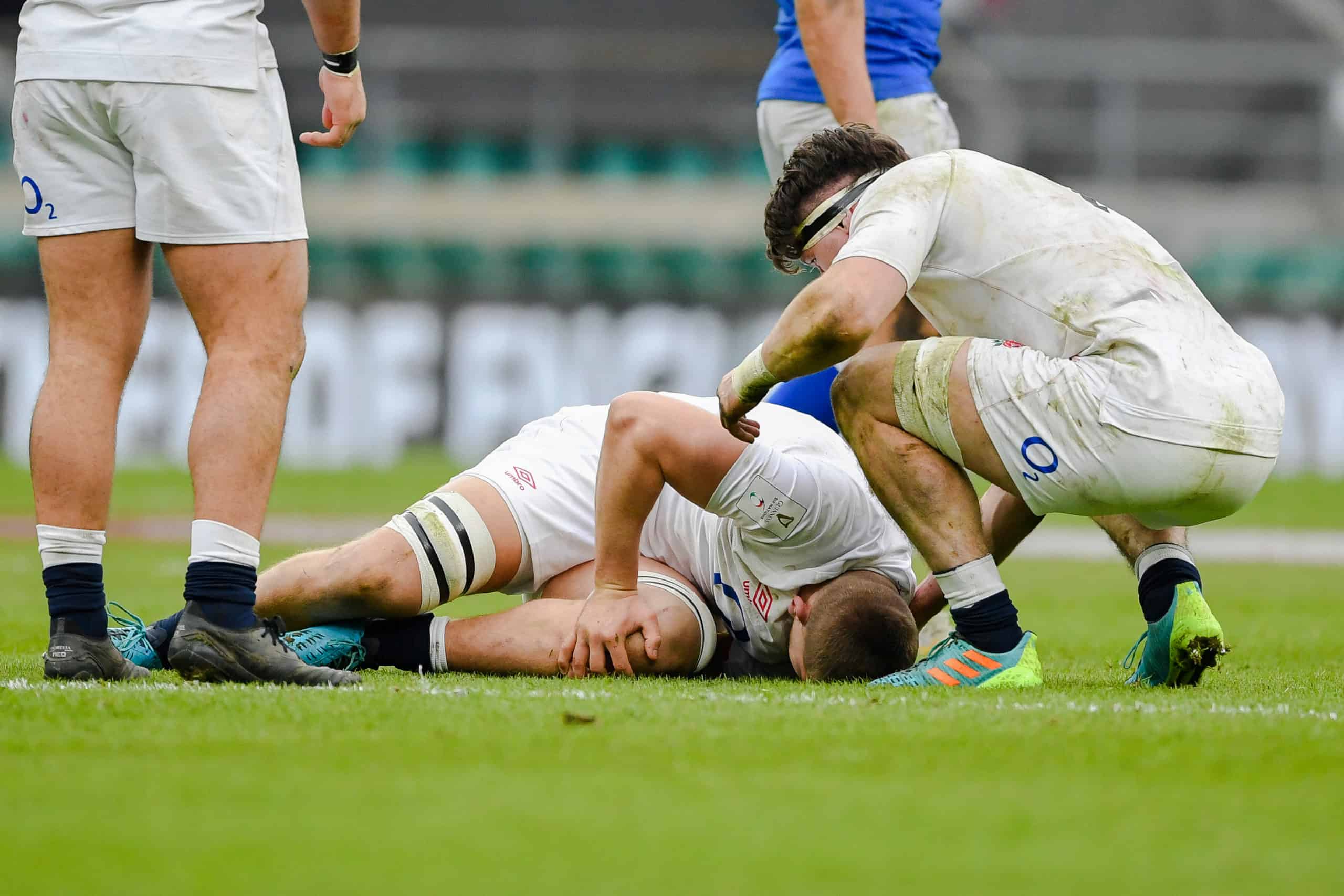Rugby is a physically demanding sport that requires a lot of contact and tackling. As such, players need to take steps to protect their bodies and prevent injuries. One common practice among rugby players is taping various body parts to provide extra support and stability during games. In this blog, we will explore why rugby players tape their legs, ears, fingers, biceps, wrists, and boots, and why they don’t wear helmets.

Why Do Rugby Players Tape Their Legs?
Rugby players often tape their legs to provide extra support for their muscles and joints. The taping can help prevent injuries such as sprains, strains, and muscle pulls. The tape can also help keep knee and ankle braces in place, providing further support to these areas.
Why Do Rugby Players Tape Their Ears?
Rugby players sometimes tape their ears to prevent cauliflower ear, a condition that occurs when the outer ear is hit repeatedly and becomes inflamed. Cauliflower ear can be painful and can affect a player’s hearing. Taping the ears helps to protect them from injury and can prevent the condition from developing.
Why Do Rugby Players Tape Their Fingers?
Rugby players frequently tape their fingers to prevent them from getting bent or broken during tackles. Taping the fingers can provide extra support and prevent them from getting caught in other players’ jerseys or equipment.
Why Do Rugby Players Tape Their Biceps?
Taping the biceps can help prevent muscle strains and tears. Rugby players often engage in strenuous activities that can put a lot of stress on their biceps, and taping can help prevent injuries and provide extra support.
Why Do Rugby Players Tape Their Wrists?
Taping the wrists can provide extra support and prevent injuries such as sprains and strains. The tape can also help keep wrist braces in place, providing further support to this area.
Why Do Rugby Players Tape Their Boots?
Rugby players often tape their boots to prevent them from slipping during games. The tape can provide extra grip, which can be especially useful in wet or muddy conditions.
Why Don’t Rugby Players Wear Helmets?
One significant difference between rugby and American football is that rugby players do not wear helmets. The absence of helmets is due to the fact that rugby is a sport that emphasizes player safety and discourages players from using their head as a weapon. Instead, players are taught to tackle with their shoulders and wrap their arms around the opposing player to bring them down. While this can result in more head injuries, rugby players believe that it is a safer approach to the game than the helmeted collisions in American football.
How Common are Injuries in Rugby?
Injuries are unfortunately a common occurrence in rugby, as the sport involves high levels of physical contact and exertion. According to research, the injury rate in rugby is estimated to be around 90 injuries per 1,000 player hours. This is higher than many other sports, such as soccer and basketball.
Injuries in rugby can range from minor cuts and bruises to more serious injuries such as fractures, dislocations, and concussions. The most common types of injuries in rugby include:
- Head injuries – due to the high level of physical contact in rugby, head injuries are common. These can range from mild concussions to more serious traumatic brain injuries.
- Muscular injuries – rugby involves a lot of running, tackling, and jumping, which can put a strain on the muscles and cause injuries such as strains and sprains.
- Joint injuries – rugby players are also at risk of joint injuries such as dislocated shoulders, knee ligament injuries, and ankle sprains.
- Cuts and bruises – due to the physical nature of the game, players often suffer cuts and bruises from collisions with other players and hard surfaces.
While injuries are common in rugby, steps are taken to minimize the risk of injury. Rugby players undergo extensive training and conditioning to prepare their bodies for the physical demands of the sport, and equipment such as mouthguards, headgear, and padding can help reduce the risk of injury.
In addition, rugby has strict rules and regulations around tackling and other forms of physical contact, which are designed to protect players and prevent injuries. Referees are responsible for enforcing these rules and penalizing players who engage in dangerous play.
Overall, while injuries are a risk in rugby, with proper training, equipment, and adherence to rules and regulations, players can reduce their risk of injury and continue to enjoy the sport safely.
Conclusion
Taping is a common practice among rugby players to prevent injuries and provide extra support during games. The use of tape on various body parts can help prevent sprains, strains, and other injuries that can result from the physical nature of the sport. Additionally, the absence of helmets in rugby is a key feature of the sport and underscores the importance of player safety. While taping and the absence of helmets may be unique to rugby, they reflect the emphasis that the sport places on player welfare and safety.
